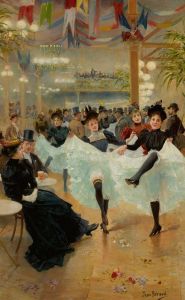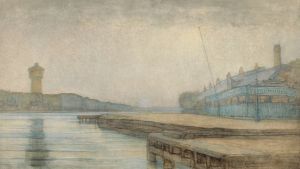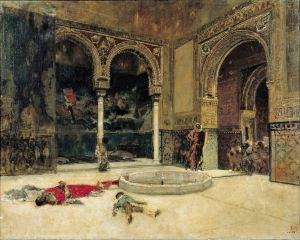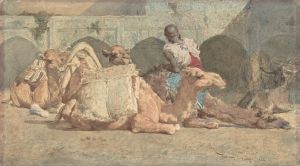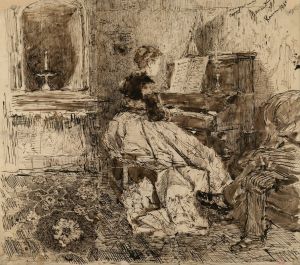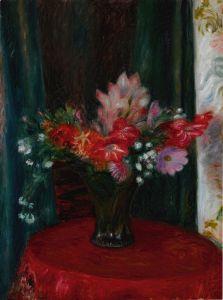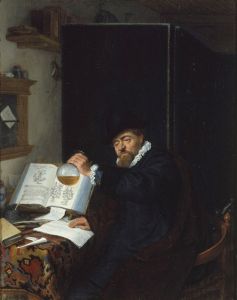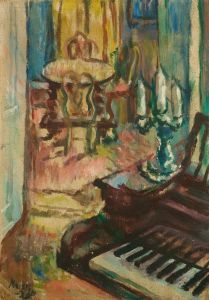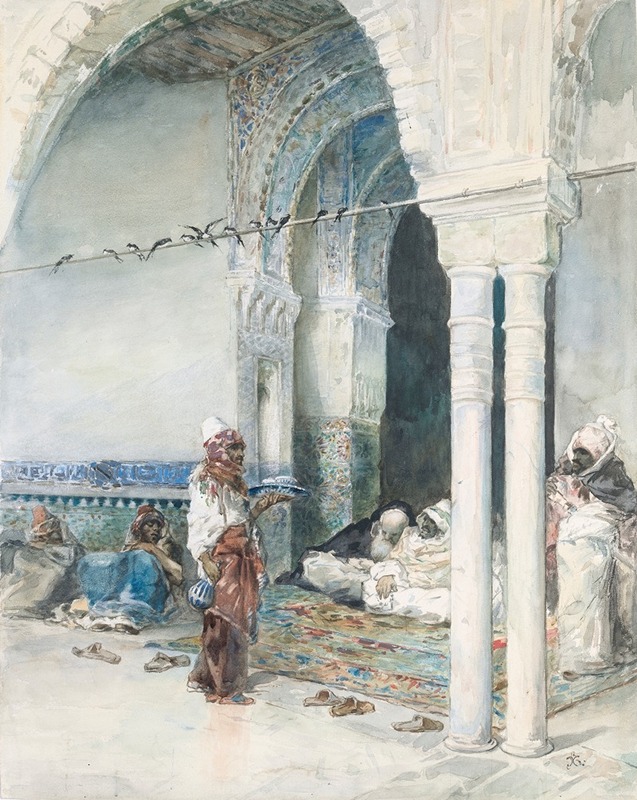
The Café of the Swallows
A hand-painted replica of Mariano Fortuny Marsal’s masterpiece The Café of the Swallows, meticulously crafted by professional artists to capture the true essence of the original. Each piece is created with museum-quality canvas and rare mineral pigments, carefully painted by experienced artists with delicate brushstrokes and rich, layered colors to perfectly recreate the texture of the original artwork. Unlike machine-printed reproductions, this hand-painted version brings the painting to life, infused with the artist’s emotions and skill in every stroke. Whether for personal collection or home decoration, it instantly elevates the artistic atmosphere of any space.
"The Café of the Swallows" is a painting by the Spanish artist Mariano Fortuny Marsal, also known as Marià Fortuny i Marsal, who was a prominent figure in the 19th-century art scene. Fortuny, born on June 11, 1838, in Reus, Catalonia, Spain, was known for his detailed and vibrant works, often reflecting his interest in Orientalism and historical themes. He was a leading figure in the Spanish Romantic movement and is often celebrated for his technical skill and the vividness of his compositions.
Fortuny's career was marked by his travels and the influence of various cultures on his work. After studying at the Academy of Fine Arts in Barcelona, he received a scholarship to study in Rome, where he was exposed to the works of the Renaissance masters. His time in Rome was crucial in shaping his artistic style, which combined elements of realism with a romantic flair. Fortuny's travels to Morocco in 1860, as part of a commission to document the Spanish-Moroccan War, deeply influenced his work, introducing him to the rich colors and dynamic scenes that would become characteristic of his paintings.
"The Café of the Swallows" is one of Fortuny's notable works, although specific details about the painting, such as its creation date and current location, are not widely documented. The painting is believed to capture a lively scene, possibly in a café setting, reflecting Fortuny's interest in everyday life and social interactions. His ability to depict light and texture with precision is evident in this work, showcasing his mastery in rendering complex scenes with clarity and vibrancy.
Fortuny's technique often involved meticulous attention to detail, and he was known for his ability to capture the nuances of light and shadow. This skill is likely reflected in "The Café of the Swallows," where the interplay of light would enhance the atmosphere of the scene. His use of color and composition would contribute to the dynamic quality of the painting, engaging viewers and drawing them into the depicted moment.
Throughout his career, Fortuny's works were celebrated for their technical brilliance and the way they captured the essence of the scenes he portrayed. His influence extended beyond Spain, impacting artists across Europe and contributing to the development of modern painting techniques. Unfortunately, Fortuny's life was cut short when he died on November 21, 1874, at the age of 36, in Rome. Despite his relatively brief career, his legacy endures through his contributions to art and his influence on subsequent generations of artists.
While specific information about "The Café of the Swallows" remains limited, Fortuny's overall body of work continues to be studied and appreciated for its artistic merit and historical significance. His paintings remain a testament to his skill and his ability to capture the vibrancy of life in his art.






